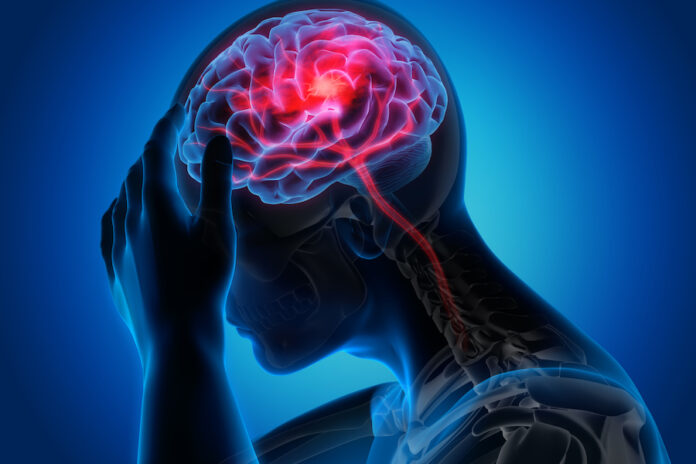Stroke
A stroke is a medical emergency that occurs when blood flow to a part of the brain is interrupted or reduced, depriving brain tissue of oxygen and nutrients. This can lead to brain cell death and significant neurological damage. Strokes are a leading cause of disability and death worldwide, and understanding their causes, symptoms, treatment, and prevention is crucial for improving outcomes and saving lives.
Types of Stroke
There are three main types of stroke: ischemic, hemorrhagic, and transient ischemic attack (TIA).
1. Ischemic Stroke: This is the most common type, accounting for about 87% of all strokes. It occurs when a blood clot blocks or narrows an artery leading to the brain. The blockage can be due to two primary causes:
- Thrombotic Stroke: This happens when a blood clot forms in one of the arteries supplying blood to the brain, often due to atherosclerosis (buildup of fatty deposits in the arteries).
- Embolic Stroke: This occurs when a blood clot or other debris forms away from the brain—typically in the heart—and travels through the bloodstream to lodge in narrower brain arteries.
2. Hemorrhagic Stroke: This type occurs when a blood vessel in the brain bursts, leading to bleeding within or around the brain. There are two main types of hemorrhagic stroke:
- Intracerebral Hemorrhage: This involves bleeding directly into the brain tissue. It is often caused by high blood pressure, aneurysms, or arteriovenous malformations.
- Subarachnoid Hemorrhage:This occurs when there is bleeding into the space between the brain and the tissues covering it. It is often caused by the rupture of an aneurysm.
3. Transient Ischemic Attack (TIA): Often called a “mini-stroke,” a TIA is a temporary period of symptoms similar to those of a stroke. It typically lasts only a few minutes and does not cause permanent damage. However, it is a significant warning sign of a possible future stroke.
Risk Factors
Several risk factors can increase the likelihood of having a stroke. These factors can be categorized into controllable and uncontrollable:
1. Controllable Risk Factors:
- High Blood Pressure: The leading risk factor for stroke. Managing blood pressure through lifestyle changes and medication can significantly reduce stroke risk.
- Diabetes: High blood sugar levels can damage blood vessels and increase stroke risk. Effective management of diabetes through diet, exercise, and medication is essential.
- Smoking: Smoking accelerates clot formation and arterial damage. Quitting smoking is one of the most effective ways to reduce stroke risk.
- High Cholesterol: Elevated levels of LDL cholesterol contribute to atherosclerosis. Statins and other medications, along with a healthy diet, can help manage cholesterol levels.
- Obesity: Excess weight is linked to high blood pressure, diabetes, and high cholesterol. Weight loss through diet and exercise can lower stroke risk.
- Physical Inactivity: Regular physical activity helps control weight, blood pressure, and cholesterol levels.
2. Uncontrollable Risk Factors:
- Age: The risk of stroke increases with age. Individuals over 55 are at higher risk.
- Gender: Women generally have a higher lifetime risk of stroke compared to men, partly due to hormonal factors.
- Family History: A family history of stroke can increase an individual’s risk. Genetic predispositions and shared lifestyle factors contribute to this risk.
- Ethnicity: Certain ethnic groups, such as African Americans and Hispanics, have a higher stroke risk due to various genetic and socioeconomic factors.
Symptoms
Recognizing the symptoms of a stroke quickly can be life-saving. The acronym FAST is a helpful tool for identifying stroke symptoms:
- Face Drooping: One side of the face may droop or feel numb. Ask the person to smile; their smile may appear uneven.
- Arm Weakness: One arm may be weak or numb. Ask the person to raise both arms; one arm may drift downward.
- Speech Difficulty: Speech may be slurred or strange. Ask the person to repeat a simple sentence; they may have trouble.
- Time to Call Emergency Services: If any of these symptoms are present, call emergency services immediately. Time is critical in minimizing brain damage.
Other symptoms may include sudden confusion, trouble seeing in one or both eyes, difficulty walking, dizziness, or a sudden severe headache with no known cause.
Diagnosis
If a stroke is suspected, immediate medical evaluation is necessary. The diagnosis typically involves:
- Physical Examination: A healthcare provider will assess symptoms and medical history.
- Imaging Tests: CT scans or MRI scans are used to determine whether a stroke is ischemic or hemorrhagic and to identify the location and extent of brain damage.
- Blood Tests: These can help determine underlying conditions contributing to the stroke, such as clotting disorders or infection.
- Other Tests: Additional tests, like carotid ultrasound or echocardiogram, may be performed to identify sources of blood clots or assess heart function.
Treatment
Treatment for stroke depends on the type of stroke and the time since symptoms began:
1. Ischemic Stroke:
Thrombolytic Therapy: Medications like tissue plasminogen activator (tPA) can dissolve blood clots. This treatment is most effective within the first few hours of symptom onset.
- Mechanical Thrombectomy: A procedure where a catheter is used to remove a clot from the brain. This is typically used in combination with thrombolytic therapy.
- Antiplatelet Agents: Medications like aspirin help prevent further clot formation.
Anticoagulants: Blood thinners may be prescribed for long-term management, especially if the stroke was caused by a clot from the heart.2. Hemorrhagic Stroke: - Surgical Intervention: Surgery may be necessary to repair the blood vessel, remove the blood, or relieve pressure on the brain.
- Medications: Medications may be used to control bleeding and reduce brain swelling.3.
- Rehabilitation:
Physical Therapy: To regain motor skills and improve physical function.
Occupational Therapy: To help with daily activities and improve quality of life.
Speech Therapy: To address communication and swallowing difficulties.
Prevention
Preventing a stroke involves addressing risk factors and making lifestyle changes:
- Healthy Diet: A diet rich in fruits, vegetables, whole grains, and lean proteins can help manage weight, cholesterol, and blood pressure.
- Regular Exercise: Engaging in regular physical activity helps maintain a healthy weight and lower blood pressure.
- Smoking Cessation: Quitting smoking significantly reduces stroke risk.
- Alcohol Moderation: Limiting alcohol intake can help control blood pressure.
- Regular Check-ups: Routine medical check-ups can help monitor and manage risk factors such as hypertension and diabetes.
Conclusion
Stroke is a serious medical condition that requires immediate attention and ongoing management. By understanding the types of strokes, risk factors, symptoms, and treatment options, individuals can take proactive steps to reduce their risk and improve their chances of recovery. Public awareness, early detection, and timely intervention are crucial in managing stroke and mitigating its impact. Through a combination of medical treatment, lifestyle changes, and rehabilitation, many people are able to regain their quality of life and continue to lead fulfilling lives after a stroke.






























